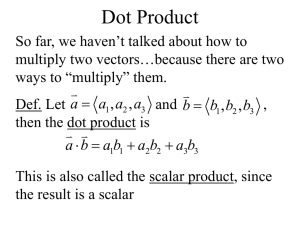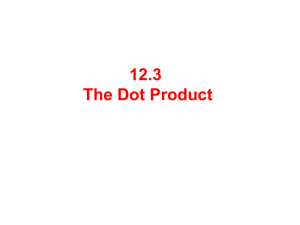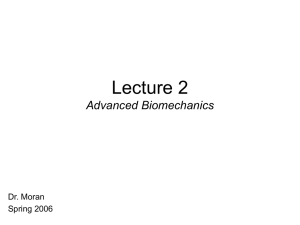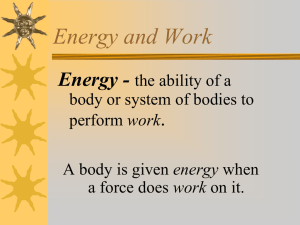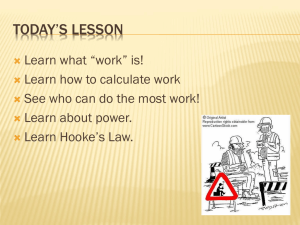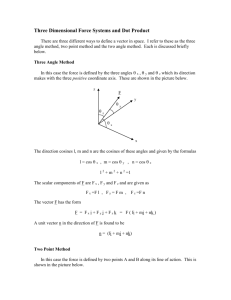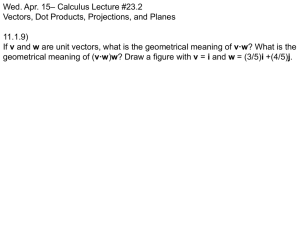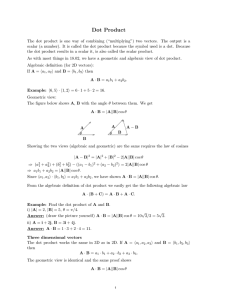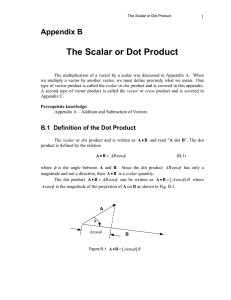12.3 The Dot Product The Dot Product
advertisement
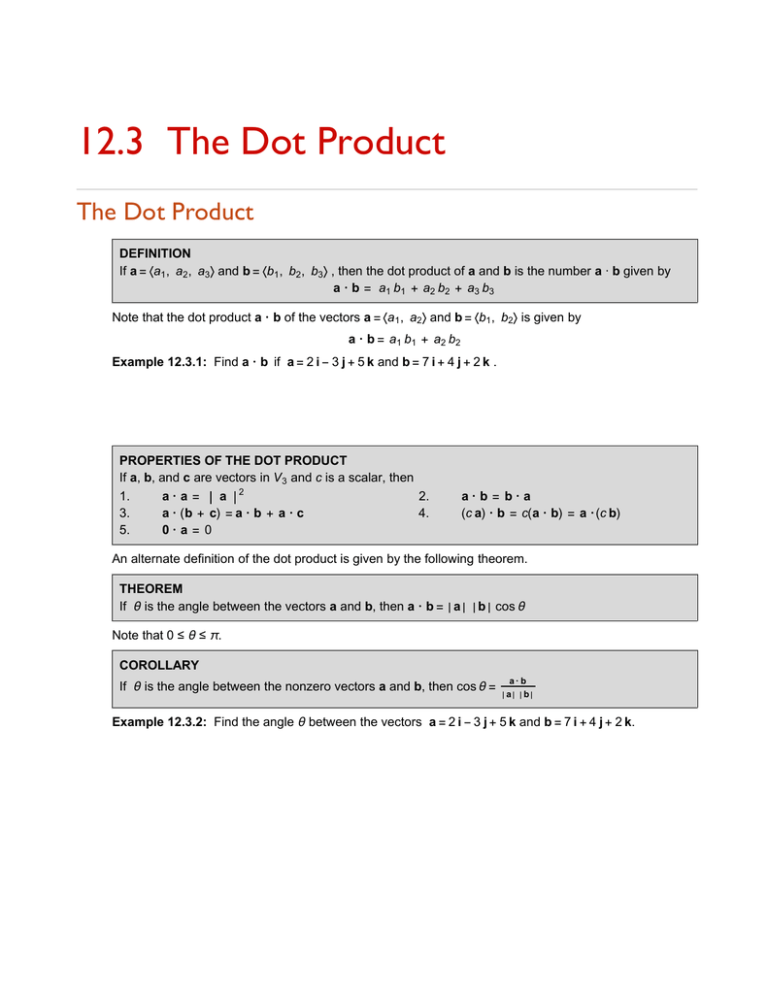
12.3 The Dot Product The Dot Product DEFINITION If a = ⟨a1 , a2 , a3 ⟩ and b = ⟨b1 , b2 , b3 ⟩ , then the dot product of a and b is the number a · b given by a · b = a 1 b1 + a 2 b2 + a 3 b3 Note that the dot product a · b of the vectors a = ⟨a1 , a2 ⟩ and b = ⟨b1 , b2 ⟩ is given by a · b = a 1 b1 + a 2 b2 Example 12.3.1: Find a · b if a = 2 i - 3 j + 5 k and b = 7 i + 4 j + 2 k . PROPERTIES OF THE DOT PRODUCT If a, b, and c are vectors in V 3 and c is a scalar, then a 2 2. 1. a·a = 3. a · (b + c) = a · b + a · c 4. 5. 0·a = 0 a·b = b·a (c a) · b = c(a · b) = a ·(c b) An alternate definition of the dot product is given by the following theorem. THEOREM If θ is the angle between the vectors a and b, then a · b = a b cos θ Note that 0 ≤ θ ≤ π. COROLLARY If θ is the angle between the nonzero vectors a and b, then cos θ = a·b a b Example 12.3.2: Find the angle θ between the vectors a = 2 i - 3 j + 5 k and b = 7 i + 4 j + 2 k. 2 | 12.3 - The Dot Product Two vectors a and b are orthogonal if and only if a · b = 0 Example 12.3.3: Determine if the vectors are orthogonal: a = 2 i - 3 j + k and b = 7 i + 4 j - 2 k. Direction Angles and Direction Cosines The direction angles of a nonzero vector a are the angles α, β, and γ (in the interval [0, π ]) that a makes with the positive x-, y-, and z-axes. The cosines of these directions angles, cos α, cos β, and cos γ, are called the direction cosines of a. If If a = ⟨a1 , a2 , a3 ⟩ , then cos α = a1 a cos β = a2 a cos γ = Projections b b a a Scalar projection of b onto a: comp a b = Vector projection of b onto a: proja b = a·b a a·b a a a = a·b a2 a a3 a 12.3 - The Dot Product | Note: The result of the dot product is a scalar. Example 12.3.4: Let a = 2 i - 3 j + 5 k and b = 7 i + 4 j + 2 k . Find proj a b. Recall that the definition of work is force times displacement, that is W = F ·d In this case, W, F, and d are all scalar quantities. This definition only applies if the force is applied in the direction of motion. D P Q F R The work done by a constant force F acting through a displacement D = P Q is given by W = F · D = F D cos θ where θ is the angle between F and D. Example 12.3.5: A car drives 500 ft on a road that is inclined 12° to the horizontal. The car weighs 2500 lb. Find the work done by the car in overcoming gravity. 3

